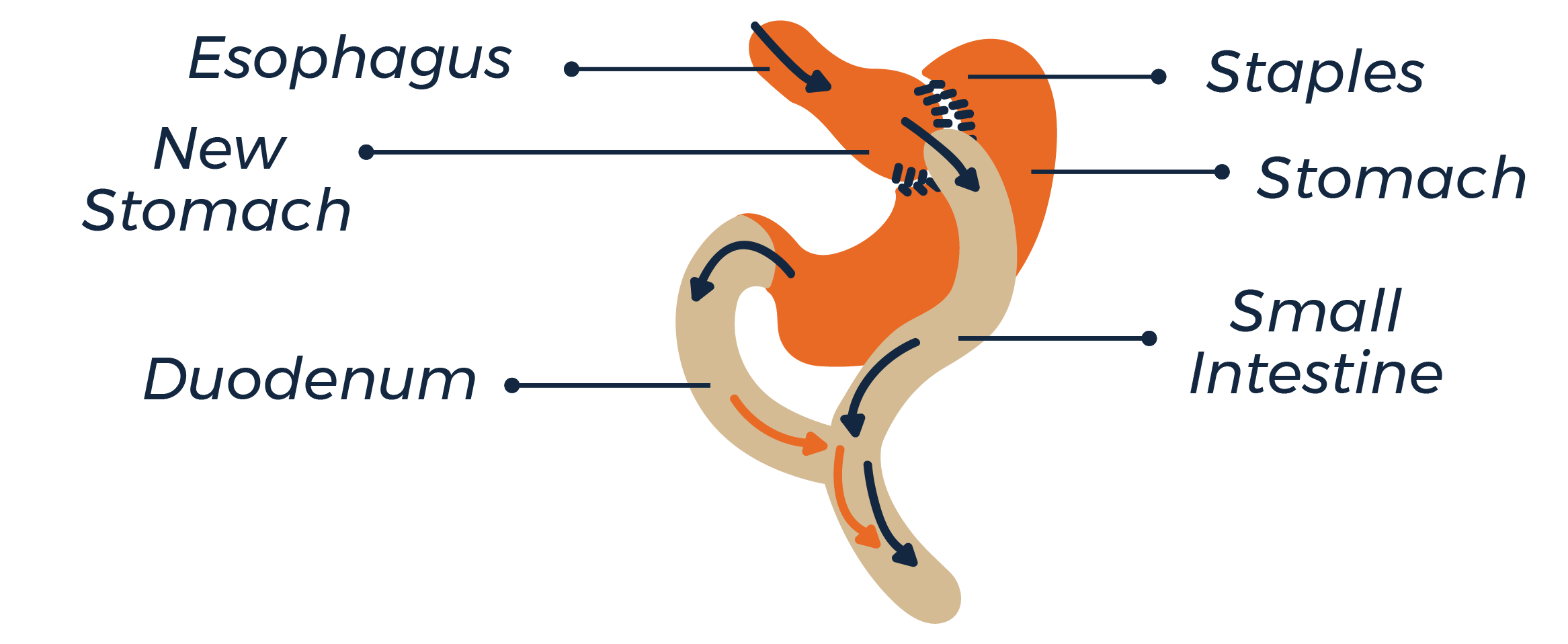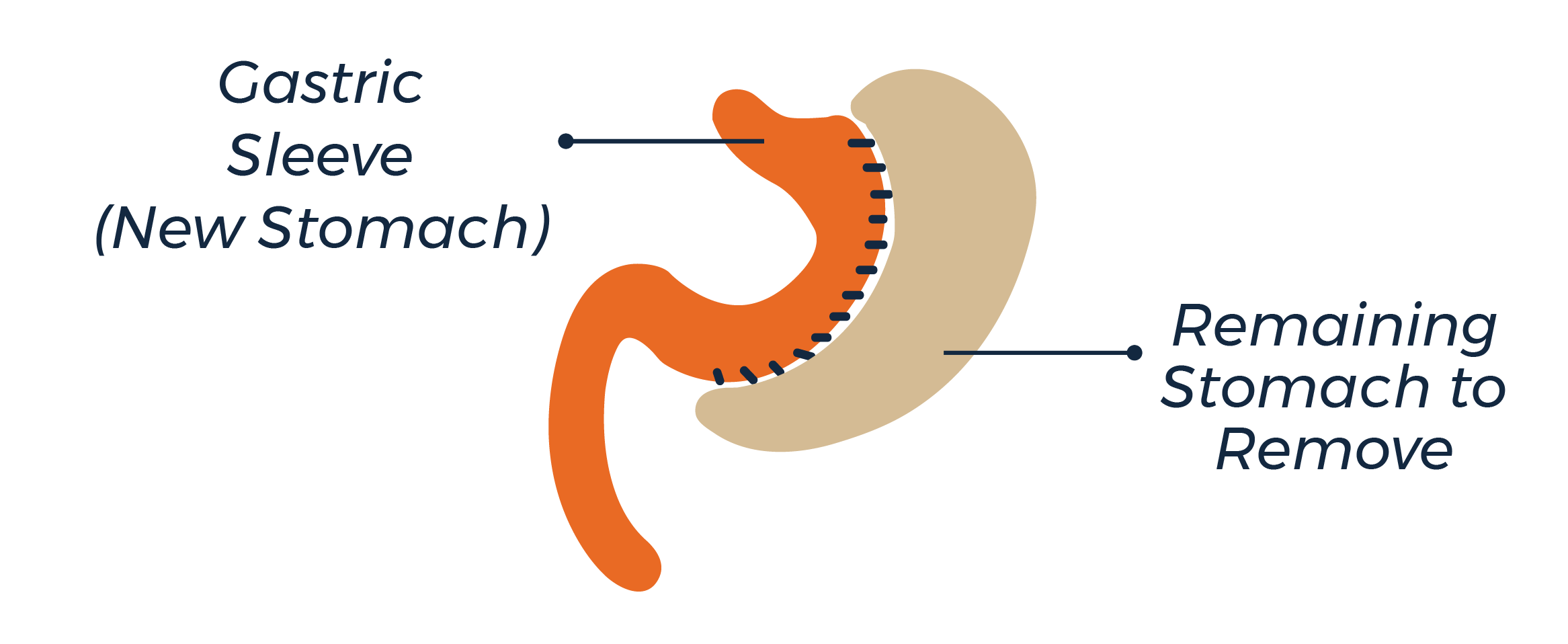Procedures
Roux-en-Y gastric bypass (RYGB)
Considered worldwide as the “Gold Standard” of Obesity Surgery, which is also why this is the procedure that is performed the most on patients with Morbid Obesity.

Considered worldwide as the “Gold Standard” of Obesity Surgery, which is also why this is the procedure that is performed the most on patients with Morbid Obesity.

During the surgery, the stomach is divided in two sections to create a new and smaller stomach called “gastric pouch” where the intestine is connected, creating a “bridge”, restricting food from passing through the bigger stomach now called “excluded stomach” which stays in its place without any future risk and continues to produce gastric juice, liquid that passes across the small intestine so it can be mixed with the food thanks to the new intestine-intestine connection done during this procedure.
This allows the patient to eat a small amount of food while producing a fullness and satiety sensation, while also not all of the calories ingested are absorbed. Patients lose in average an 80% of excess weight a year after the surgery.

The Vertical Sleeve Gastrectomy, also known as the Gastric Sleeve, is a surgery that involves removing 80% of the stomach, reducing gastric capacity.
At the same time, the production of the Ghrelin Hormone is reduced in a significant level, which is responsable of the appetite. One of its main advantages is that it preserves the normal anatomy of the small intestine.
In the last few years, the term Metabolic Surgery has been used to refer to those procedures designated to weight loss, due to its benefits in controlling glucose, lipids, hypertension, and many others. In diabetic patients, more than 80% achieves an appropriate glycemic control after surgery, making the Gastric Bypass the most effective method, while also being considered as a valuable treatment option for Obesity and Diabetes Mellitus patients.
As the Bariatric Surgery demand increases, it is more and more frequent to make a revision surgery to the patient in order to protect its safety and health, making sure there is asatisfactory result, at Dr. Zorrilla’s Clinic, we are sure we are the best option.
Besides conventional techniques, at Dr. Zorrilla’s Clinic, we offer many other surgery options for obesity, based on what is more convenient for every patient.

